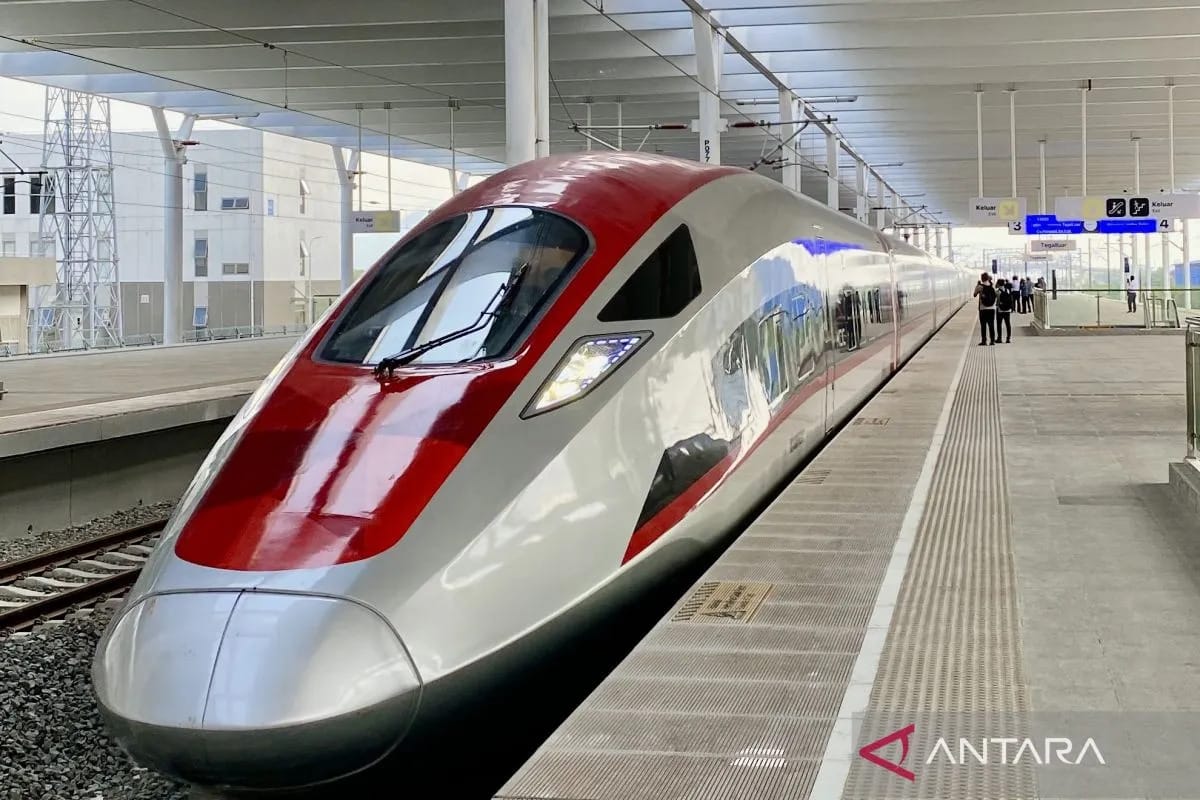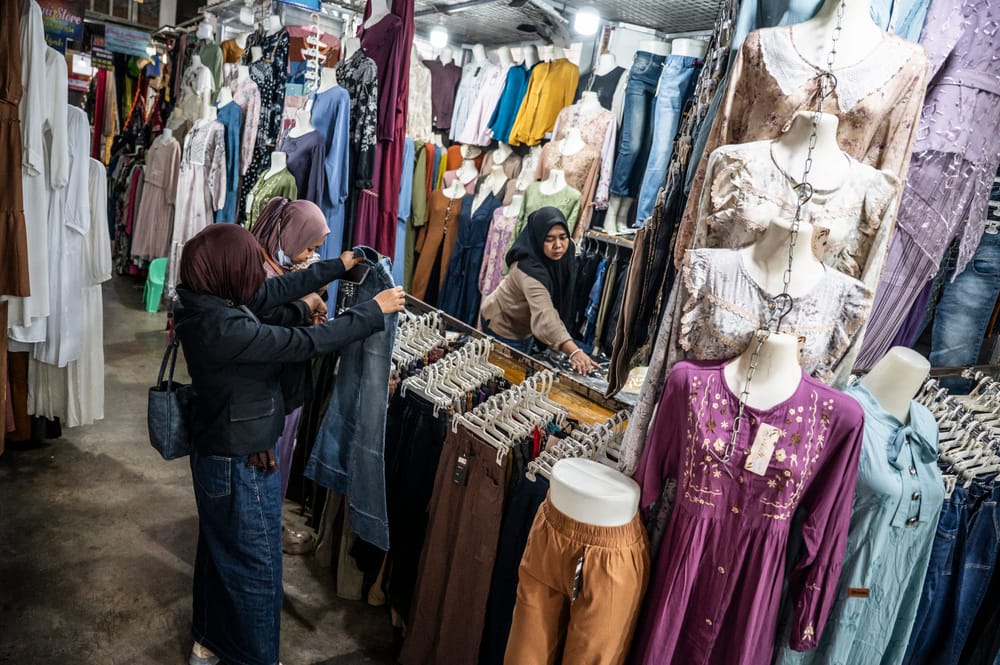The ambitious Jakarta-Bandung High Speed Rail (KCJB) project, also known as Whoosh, has once again been polemicized due to the ballooning debt burden.
The polemic is because Finance Minister Purbaya Yudhi Sadewa refused to pay Whoosh's debt using the state budget.
Purbaya assessed that the settlement of the fast train debt can be carried out by the Investment Management Agency (BPI) Daya Anagata Nusantara (Danantara) because Danantara has taken the dividend revenue of BUMN.
There are two possible solutions to the Whoosh project debt: government intervention and debt restructuring.
Paramadina University Vice Chancellor Handi Rizsa Idris said the amount of investment in the construction of the Jakarta Bandung High Speed Train reached around 7.27 billion US dollars or Rp 120.38 trillion.
Of the total investment, about 75 percent is financed through loans from the China Development Bank (CDB), with an interest rate of 2 percent per year.
Whoosh's development debt is carried out with a fixed interest scheme for the first 40 years. KCJB's interest rate is much higher than Japan's proposal of 0.1 percent per year.
In addition, the total debt has not calculated the additional withdrawal of new loans by Kereta Cepat Indonesia China (KCIC) due to a cost overrun of US$1.2 billion, the interest on this additional debt is also higher, which is above 3 percent per year.
Handi said that most of the financing of the Whoosh project is supported by CDB loans, plus government equity participation through the state budget, as well as equity contributions from a consortium of Indonesian SOEs and Chinese companies according to their respective share portions in KCIC.
More than half of the cost to cover the cost overrun comes from additional CDB debt. The rest comes from the joint capital of Indonesian SOEs and the Chinese party working on this project. The cost overrun was borne by both parties, with 60 percent borne by the Indonesian consortium and 40 percent borne by the Chinese consortium.
"So that this debt settlement problem does not get longer, the government must take the right steps, namely by intervening and restructuring the debt," he said in a Paramadina-Indef discussion on Solutions to Pay Fast Train Debt in Jakarta (22/10).
Handi said that through the debt restructuring scheme, PT KAI and Danantara need to explore restructuring KCIC's debt with China, then intervention can be carried out with Danantara providing additional capital injection to PT KAI to cover the financial burden of the Whoosh project.
"If there is no action, this debt settlement will drag on, it requires firmness from the government," he said.
60-Year Debt Restructuring
Chairman of the National Economic Council (DEN) Luhut Binsar Pandjaitan confirmed that the government and the Chinese side have agreed to restructure the financing of the Jakarta-Bandung High Speed Rail (KCJB) project.
Through this restructuring, the debt repayment period will be extended to 60 years so that the financial burden becomes lighter. In fact, the restructuring has been discussed with the Ministry of Finance (Kemenkeu).
"Yesterday we talked to the Ministry of Finance (Kemenkeu), there is no problem, because if we restructure 60 years, it will be smaller," Luhut said at the 1 Year Prabowo-Gibran event as reported by Antara (22/10).
He pointed out that with restructuring, annual payment obligations could be reduced to around IDR 2 trillion per year.
According to Luhut, the agreement with the Chinese side has actually been reached, but the implementation was delayed due to a change of government.
The Coordinating Minister for Infrastructure and Regional Development, Agus Harimurti Yudhoyono (AHY), opened his voice about the latest developments in the project undertaken by PT KCIC. AHY said there was an intensive discussion that took place at Wisma Danantara some time ago, discussing solutions to the financial burden that was still entangling the national strategic project.
"KCIC is facing serious challenges that must be resolved, related to debt in a meeting at Wisma Danantara a few days ago between the Management Board who was present Mr. Rosan CEO of Danantara, Mr. Dony COO, Mr. Pandu CIO, at that time both were looking for solutions, still being developed," AHY said.
AHY also emphasized that communication between the government and stakeholders is ongoing, including with the Ministry of Transportation and PT Kereta Api Indonesia (Persero), which are key players in this project.
Need to Study Before Engaging in Projects
On the same occasion at the Paramadina-Indef Discussion, Indef Program Director Eisha Rachbini said the government needs to conduct a study or rearrange the business model so that the project becomes more productive and sustainable.
This step must be accompanied by debt restructuring negotiations that involve aspects of interest, tenure, and improved management and governance so that it is clearer from the start.
Furthermore, the project should be viewed as part of transportationcorridor development, not just a mode of transportation.
From a fiscal perspective, the involvement of the state budget should be the last and conditional option. The government can implement a fiscal firewall mechanism, which is a strict limit so that debt risks do not directly burden the fiscal balance.
"Then, it is managed through a special institution that is oriented towardsrevenue recovery," he explained.
Danantara conducts internal review
Danantara's Investment Management Agency (BPI) is preparing two debt settlement options for the Jakarta-Bandung High Speed Rail (KCJB) project managed by PT Kereta Cepat Indonesia China (KCIC). The internal study is still ongoing and has not been discussed with the relevant ministries.
Danantara CEO Rosan Roeslani explained the two schemes currently under consideration. First, the addition of equity or the injection of additional funds into the KCJB project. Second, the takeover of the project infrastructure so that it becomes a state asset like ownership models in other railroad industries.
His team is weighing various schemes to find the most appropriate formula, and every decision will be made in a measured and structured manner. Discussions with the ministry will only take place after the internal evaluation is complete.






